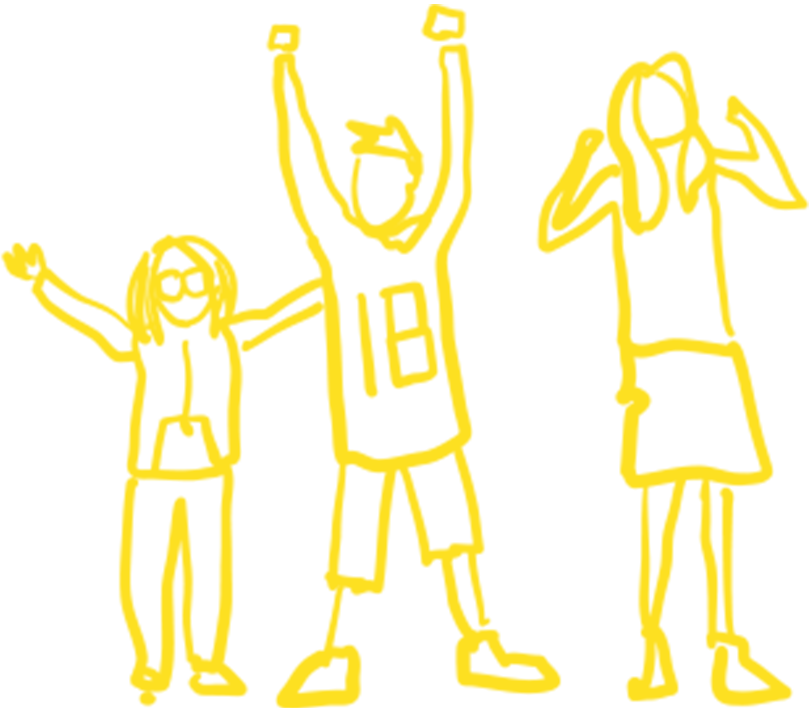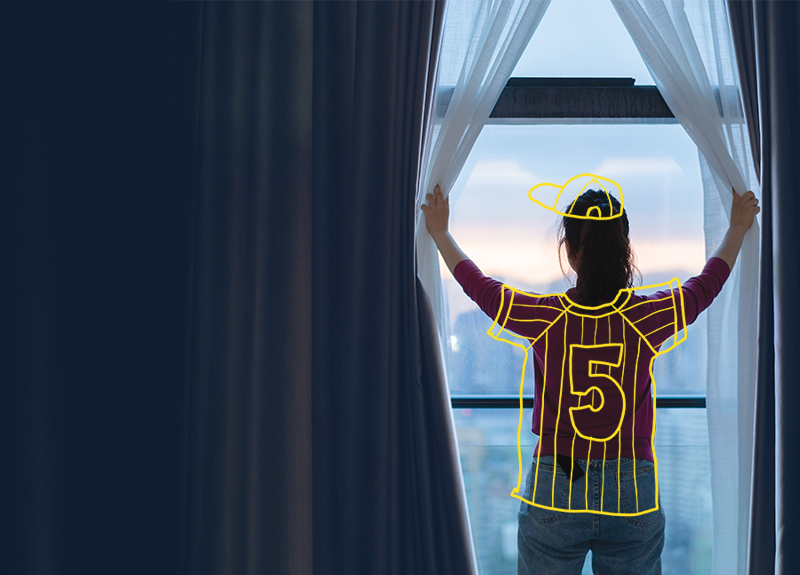
We use cookies to customize content and ads, to provide social features, and to analyze traffic on our site. We may also share your usage information with social media platforms and other partners, for advertising and statistical purposes. To manage or disable these cookies, click on "Cookie settings." For more information, please click on our Cookie Policy.
Accept
Decline



REGISTER NOW
For US residents only | Full prescribing Information
Envision the impact Lamzede can make
REGISTER NOW >
Register for a Lamzede Discovery Days patient meeting today!
We understand that what matters most is you. Whether you’re an individual affected by rare disease, caregiver, doctor, or business partner, you drive us to build a better world. A world in which everyone can find the treatment and care we need.
Chiesi Global Rare Diseases.
Committed to every single life.
Connect with Chiesi Global Rare Diseases and other people living with alpha-mannosidosis as we discuss:
How Lamzede can provide long-lasting �treatment in alpha-mannosidosis
Lamzede's studied safety profile
Lamzede's role in helping manage alpha-mannosidosis
Lamzede: �Discovery Days

Lamzede is an enzyme replacement therapy (ERT) that’s a lifelong treatment for the non-central nervous system symptoms of alpha-mannosidosis.
Treatment with Lamzede may help slow the progression of alpha-mannosidosis over time.
Lamzede:�The first and only ERT �for alpha-mannosidosis
LEARN MORE >
Indication
Lamzede® (velmanase alfa-tycv) is intended for the treatment of non-central nervous system symptoms of alpha-mannosidosis in adult and pediatric patients.
Important Safety Information
What should I know about infusions?
Your healthcare provider may give you other medications prior to your next infusion to help manage allergic reactions and infusion-related side effects. They will explain how to recognize the signs and symptoms of these allergic reactions and infusion-related side effects. If these signs and symptoms occur, it’s important for you to seek immediate medical care.
What are the common signs and symptoms of an allergic reaction or infusion-related side effects with Lamzede?
In clinical trials, some patients experienced signs and symptoms of an allergic reaction, which included bluish skin discoloration, low blood pressure, vomiting, hives, skin redness, facial swelling, fever, and involuntary movements.
In clinical trials, when patients experienced an infusion-related side effect, the most common signs were fever, chills, skin redness, vomiting, cough, itching, rash, and pink eye.
Are there certain people who should or should not take Lamzede?
Lamzede may cause harm to your unborn baby. For females who are able to become pregnant, your healthcare provider should do a pregnancy test before you start treatment with Lamzede. Tell your healthcare provider right away if you become pregnant or think you may be pregnant. You should use effective birth control during treatment with Lamzede and for at least 14 days after the last dose.
What are the most common side effects of Lamzede?
Lamzede can cause side effects including severe allergic reactions and anaphylaxis, common cold, fever, headache, and joint pain or stiffness.
Please see full Prescribing Information for Lamzede.
You are encouraged to report negative side effects of prescription drugs to the FDA.
Visit www.fda.gov/medwatch or call 1-800-FDA-1088.
What is the most important information I should know about Lamzede?
Severe allergic reactions (hypersensitivity reactions) including anaphylaxis, may occur during and after Lamzede treatment. If severe allergic reactions or anaphylaxis occur during treatment, your healthcare provider will immediately stop the infusion and provide appropriate medical care. If these reactions should occur after treatment, seek immediate medical care.
Indication
Lamzede® (velmanase alfa-tycv) is intended for the treatment of non-central nervous system symptoms of alpha-mannosidosis in adult and pediatric patients.
Important Safety Information
+
+
Important Safety Information
What is the most important information I should know about Elfabrio?
Severe allergic reactions (hypersensitivity reactions), including anaphylaxis, may occur during and after Elfabrio treatment. If severe allergic reactions or anaphylaxis occurs during treatment, your healthcare provider will immediately stop the infusion and provide appropriate medical care. If these reactions should occur after treatment, seek immediate medical care.
What should I know about Elfabrio infusions?
Your healthcare provider may give you other medications prior to your Elfabrio infusions to help manage allergic reactions and infusion-related side effects. They will explain how to recognize the signs and symptoms of these allergic reactions and infusion-related side effects. If these signs and symptoms occur, it’s important for you to seek immediate medical care. If the reaction is mild to moderate, your healthcare provider may choose to slow the infusion rate or withhold the dose.
In clinical trials, 41 patients (29%) experienced an infusion-related side effect. The most common signs and symptoms of an infusion-related reaction with Elfabrio were hypersensitivity, nausea, chills, itchy skin, rash, chest pain, dizziness, vomiting, feelings of weakness, pain, sneezing, shortness of breath, nasal congestion, throat irritation, abdominal pain, skin redness, diarrhea, burning sensation, nerve pain, headache, tingling or numbness, shaking movements, agitation, increased body temperature, flushing, slow heart rate, muscle pain, high blood pressure, and low blood pressure.
Your healthcare provider will do blood and urine tests to check your kidney function during treatment with Elfabrio.
The most common side effects of Elfabrio include infusion-related side effects, common cold, headache, diarrhea, fatigue, nausea, back pain, pain in the limbs, and sinus infection.
Indication
Elfabrio® (pegunigalsidase alfa-iwxj) is a prescription infusion medicine used to treat adults with confirmed Fabry disease.
Please see full Prescribing Information for Elfabrio.
You are encouraged to report negative side effects of prescription drugs to the FDA.
Visit www.fda.gov/medwatch or call 1-800-FDA-1088.
Privacy Policy | Terms of Use
©Chiesi USA, Inc. 2025. All rights reserved. Privacy Settings.�Lamzede® is a registered trademark owned by Chiesi Farmaceutici S.p.A. PP-RA-00680 V1.0

You are now leaving the patient meeting registration website.
This external link is provided to you for your convenience.

STAY ON CURRENT PAGE
CONTINUE TO WEBSITE






Important Safety Information
What is the most important information I should know about Elfabrio?
Severe allergic reactions (hypersensitivity reactions), including anaphylaxis, may occur during and after Elfabrio treatment. If severe allergic reactions or anaphylaxis occurs during treatment, your healthcare provider will immediately stop the infusion and provide appropriate medical care. If these reactions should occur after treatment, seek immediate medical care.
What should I know about Elfabrio infusions?
Your healthcare provider may give you other medications prior to your Elfabrio infusions to help manage allergic reactions and infusion-related side effects. They will explain how to recognize the signs and symptoms of these allergic reactions and infusion-related side effects. If these signs and symptoms occur, it’s important for you to seek immediate medical care. If the reaction is mild to moderate, your healthcare provider may choose to slow the infusion rate or withhold the dose.
In clinical trials, 41 patients (29%) experienced an infusion-related side effect. The most common signs and symptoms of an infusion-related reaction with Elfabrio were hypersensitivity, nausea, chills, itchy skin, rash, chest pain, dizziness, vomiting, feelings of weakness, pain, sneezing, shortness of breath, nasal congestion, throat irritation, abdominal pain, skin redness, diarrhea, burning sensation, nerve pain, headache, tingling or numbness, shaking movements, agitation, increased body temperature, flushing, slow heart rate, muscle pain, high blood pressure, and low blood pressure.
Your healthcare provider will do blood and urine tests to check your kidney function during treatment with Elfabrio.
The most common side effects of Elfabrio include infusion-related side effects, common cold, headache, diarrhea, fatigue, nausea, back pain, pain in the limbs, and sinus infection.
Please see full Prescribing Information for Elfabrio.
You are encouraged to report negative side effects of prescription drugs to the FDA.
Visit www.fda.gov/medwatch or call 1-800-FDA-1088.
+
Discovery Days meetings are intended for an adult audience.

Discovery Days

You are now leaving the patient meeting registration website.
Chiesi Farmaceutici S.p.A. and its
affiliates are not responsible for the
content on external websites or their
privacy practices.
STAY ON CURRENT SITE
CONTINUE TO WEBSITE
Indication
Lamzede® (velmanase alfa-tycv) is intended for the treatment of non-central nervous system symptoms of alpha-mannosidosis in adult and pediatric patients.
Important Safety Information
What is the most important thing I should know about Lamzede?
Severe allergic reactions (hypersensitivity reactions) including anaphylaxis, may occur during and after Lamzede treatment. If severe allergic reactions or anaphylaxis occur during treatment, your healthcare provider will immediately stop the infusion and provide appropriate medical care. If these reactions should occur after treatment, seek immediate medical care.
What should I know about infusions?
Your healthcare provider may give you other medications prior to your next infusion to help manage allergic reactions and infusion-related side effects. They will explain how to recognize the signs and symptoms of these allergic reactions and infusion-related side effects. If these signs and symptoms occur, it’s important for you to seek immediate medical care.
What are the common signs and symptoms of an allergic reaction or infusion-related side effects with Lamzede?
In clinical trials, some patients experienced signs and symptoms of an allergic reaction, which included bluish skin discoloration, low blood pressure, vomiting, hives, skin redness, facial swelling, fever, and involuntary movements.
In clinical trials, when patients experienced an infusion-related side effect, the most common signs were fever, chills, skin redness, vomiting, cough, itching, rash, and pink eye.
Are there certain people who should or should not take Lamzede?
Lamzede may cause harm to your unborn baby. For females who are able to become pregnant, your healthcare provider should do a pregnancy test before you start treatment with Lamzede. Tell your healthcare provider right away if you become pregnant or think you may be pregnant. You should use effective birth control during treatment with Lamzede and for at least 14 days after the last dose.
What are the most common side effects of Lamzede?
Lamzede can cause side effects including severe allergic reactions and anaphylaxis, common cold, fever, headache, and joint pain or stiffness.
Please see full Prescribing Information for Lamzede.
You are encouraged to report negative side effects of prescription drugs to the FDA.
Visit www.fda.gov/medwatch or call 1-800-FDA-1088.
What is the most important thing I need to know about Lamzede?
Severe allergic reactions (hypersensitivity reactions) including anaphylaxis, may occur during and after Lamzede treatment. If severe allergic reactions or anaphylaxis occur during treatment, your healthcare provider will immediately stop the infusion and provide appropriate medical care. If these reactions should occur after treatment, seek immediate medical care.
What should I know about infusions?
Your healthcare provider may give you other medications prior to your next infusion to help manage allergic reactions and infusion-related side effects. They will explain how to recognize the signs and symptoms of these allergic reactions and infusion-related side effects. If these signs and symptoms occur, it’s important for you to seek immediate medical care.
What are the common signs and symptoms of an allergic reaction or infusion-related side effects with Lamzede?
In clinical trials, some patients experienced signs and symptoms of an allergic reaction, which included bluish skin discoloration, low blood pressure, vomiting, hives, skin redness, facial swelling, fever, and involuntary movements.
In clinical trials, when patients experienced an infusion-related side effect, the most common signs were fever, chills, skin redness, vomiting, cough, itching, rash, and pink eye.
Are there certain people who should or should not take Lamzede?
Lamzede may cause harm to your unborn baby. For females who are able to become pregnant, your healthcare provider should do a pregnancy test before you start treatment with Lamzede. Tell your healthcare provider right away if you become pregnant or think you may be pregnant. You should use effective birth control during treatment with Lamzede and for at least 14 days after the last dose.
What are the most common side effects of Lamzede?
Lamzede can cause side effects including severe allergic reactions and anaphylaxis, common cold, fever, headache, and joint pain or stiffness.
Please see full Prescribing Information for Lamzede.
You are encouraged to report negative side effects of prescription drugs to the FDA.
Visit www.fda.gov/medwatch or call 1-800-FDA-1088.
REGISTER NOW >
Until now, there has never been an FDA-approved treatment option designed for alpha-mannosidosis.
Lamzede is an enzyme replacement therapy (ERT) that’s a lifelong treatment for the non-central nervous system symptoms of alpha-mannosidosis.
Treatment with Lamzede may help slow the progression of alpha-mannosidosis over time.
Lamzede:
The first and only ERT for alpha-mannosidosis


